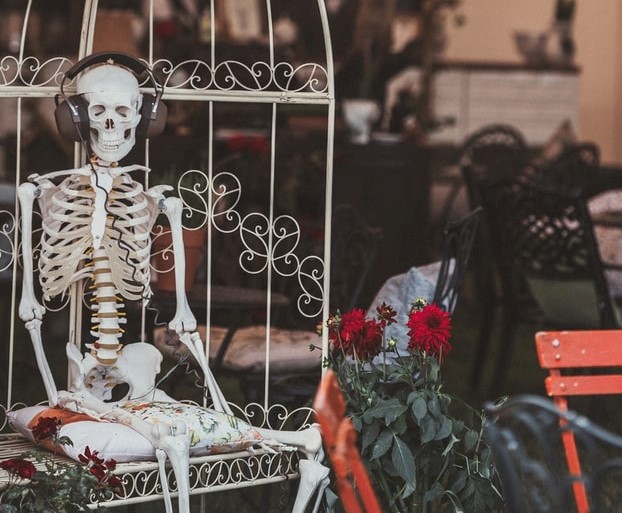In the US, jazz is revered for its rich past and its great early innovators and personalities. These iconic musicians, mostly active from the 1920s-60s, are still the face of jazz today. Our jazz education system devotes great effort to teaching the music of these greats, but in doing so often neglects the music and contributions of the musicians, composers, and innovators of the more recent past and today. Combine this with jazz radio’s similar focus on the music’s early greats and the songbook of jazz standards, and jazz unsurprisingly declines in popularity with younger demographics. By overfocusing on the music’s early years and neglecting the present, educators are failing students by presenting jazz as museum music, something curious from the past to admire but which has little relevance to our lives today.
The American jazz education system enthusiastically promotes the history of jazz, but only to a point. A disproportionate amount of emphasis is placed on the first half of the music’s history, as if jazz ended in 1964 when John Coltrane recorded A Love Supreme. The repertoire of jazz standards includes very few songs written after the early 1960’s. Jazz history textbooks thoroughly cover jazz’s roots through the fusion movement in the late 60’s and 70’s, but dedicate very little time to the last 40 years. For example, Jazz: Essential Listening by DeVeaux and Giddins, which claims to be the No. 1 jazz textbook, uses only 2 of 15 chapters to address the last 40 years of jazz. If one considers jazz to have started circa 1910, the time elapsed since 1980 is over 35% of jazz history. Barely glancing over such a large swath of the music’s history gives the impression that the last 40 years of jazz are largely irrelevant and discredits the artists and innovations of those decades. Essentially Ellington, the premier high school jazz competition in the US and a provider of free big band music to schools, is arguably the driving force in high school jazz repertoire, but their repertoire list is limited to Duke Ellington and a select few of his contemporaries. Ellington was born in 1899, 107 years prior to this year’s high school freshman class. His music, while great, is from an era that has little application to kids’ lives today. There just aren’t many teenagers who will find a strong connection to music of their great-grandparents’ generation.
By overfocusing on jazz’s early music, we represent jazz as an artform which lacks current relevance and limits students’ opportunities to see themselves represented in the music. As rich as jazz history is, it lacks in diversity, especially when it comes to gender. There are very few women represented in the music’s history, particularly as instrumentalists. Today, there are many great female musicians active in jazz, but they are still underrepresented and under-acknowledged. With our jazz education system being so narrowly focused on jazz of the 1920s-60s, we are denying students the opportunity to hear, see, and learn about these great musicians. The jazz we present needs to be reflective of the world we inhabit. As GRAMMY award winning drummer Terri Lyne Carrington put it in a 2019 interview examining gender in jazz, “Music is an expression of life, and you can’t have life without women. If [life is] what we’re expressing, then women’s voices have to be part of that expression.” It’s easy to observe that female participation in jazz decreases as you move up the ranks. There are plenty of girls joining jazz band in middle school, a little less in high school, fewer again in college, and even fewer still in the professional world. If the jazz we’re presenting to our students is male dominated, then the message we’re sending to females is that they’re not really welcome here, which contributes to this attrition. A conscious effort needs to be made to show that jazz is a place where everyone belongs. In the classroom, this means listening to music and playing compositions by women, hanging up posters of female musicians, and bringing in clinicians who are women. The bottom line is when students can see themselves represented in the music, they are much more likely to feel they belong.
Today’s jazz musicians and composers are also integrating more styles into jazz. Jazz is not just swing and an occasional bossa nova. Hip-hop, R&B, electronica, and rock are all heavy influences on present-day jazz. The jazz we teach in schools is stylistically narrow, basically limited to swing, but the reality is that the jazz genre has greatly branched out. By not acknowledging and teaching current jazz trends in schools, we’re not accurately conveying what jazz sounds like at this moment in time. Additionally, including jazz which draws from other styles can increase the music’s appeal to students. Most students are listening to music other than jazz in their free time, so if they hear aspects of these other styles in the jazz they’re playing and listening to in school, they’re likely to find more appeal and relevance in the jazz genre.
If educators desire their students to be more engaged in jazz and to view it as a relevant, evolving artform, it is essential that teachers expose students to a broader, more current interpretation of the music. In addition to listening to and playing older music and arrangements of jazz standards, jazz educators should be exposing students to a diverse group of current musicians and performing original music by living composers. Presenting a thorough, diverse, and stylistically broad view of jazz provides more opportunities for students to make connections with the jazz genre. For jazz to thrive, those who teach it can’t afford to be stuck in the past. In order for students to see jazz as a living, viable artform, it’s essential that jazz educators actually present it as such.
